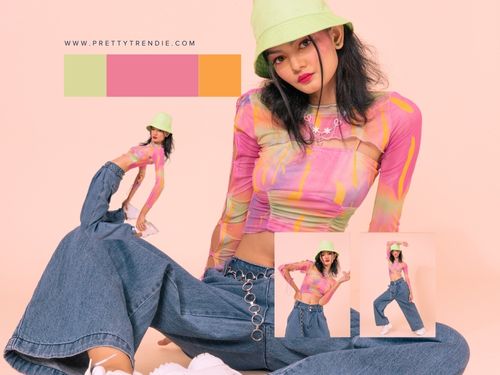The Current State of 3D Printing in Fashion
3D printing, also known as additive manufacturing, builds objects layer by layer based on digital designs. This technology eliminates the need for traditional cutting and stitching, offering designers complete freedom to experiment with shapes, structures, and textures. While still relatively new in mainstream fashion, it has already made significant strides, especially in accessories such as jewelry, handbags, and footwear.
Designers like Iris van Herpen have showcased 3D-printed couture that blends technology with art, featuring sculptural gowns and intricate textures. Meanwhile, more commercial brands are exploring how 3D printing can create customizable garments that are both practical and wearable. The appeal lies not only in the innovation but also in the efficiency and sustainability that 3D printing offers. Because the process produces only what is needed, it reduces fabric waste and lowers carbon emissions by allowing local, on-demand manufacturing.
Why 3D Printing Matters Now
Fashion consumers today value individuality, sustainability, and innovation. 3D printing aligns with all three, offering a perfect balance of creativity and responsibility. Here’s why it’s becoming such a significant focus:
1. Personalization and Custom Fit
With body-scanning technology and digital design tools, 3D printing allows for clothing that fits the wearer perfectly. Instead of relying on standard sizes, designers can create garments tailored to each individual’s shape and posture. This is particularly useful for footwear, athletic wear, and high-end fashion pieces.
2. Creative Freedom for Designers
Traditional fabrics and sewing methods limit what designers can achieve. 3D printing removes those restrictions by allowing the creation of geometric patterns, flexible structures, and textures that would be impossible to sew by hand. It brings art, science, and design together in exciting new ways.
3. Sustainable and Efficient Production
The fashion industry is under pressure to become more sustainable, and 3D printing helps address that challenge. Because materials are used more efficiently, waste is drastically reduced. On-demand printing also means no overproduction, which has long been one of fashion’s most significant environmental issues.
4. Advances in Materials
New 3D-printing materials are softer, more durable, and more flexible than before. These innovations make printed garments more comfortable and practical, bridging the gap between futuristic fashion and everyday wear.
What to Expect Next: Future Trends
As 3D printing technology continues to evolve, it is opening new possibilities for both designers and consumers. Here are the key developments to expect in the next few years.
1. Custom-Fit Clothing for Everyone
In the near future, shoppers can scan their bodies with a smartphone and order garments that are printed to their exact measurements. Custom-fit clothing will become more affordable and accessible, reducing the need for alterations and returns. This approach not only improves comfort but also enhances confidence, as every piece is tailored to the individual.
For accessories, 3D printing can create perfectly fitted jewelry, such as rings or bracelets, that are precisely shaped to a wearer’s hand or wrist. As this becomes standard practice, the concept of “one size fits all” will fade away.
2. Hybrid Designs Combining Fabric and Printed Elements
It’s unlikely that all clothing will be fully 3D-printed in the near term. Instead, many garments will combine traditional textiles with printed components. Imagine a jacket with a 3D-printed collar or a dress with decorative lattice panels seamlessly integrated into the fabric. This hybrid approach offers the comfort of cloth with the sculptural precision of printing.
Designers are already experimenting with mixing the two, using printed materials to add structure, support, and detail that fabric alone cannot achieve. This balance between technology and craftsmanship will shape the next generation of fashion design.
3. On-Demand Manufacturing and Local Production
3D printing has the potential to transform fashion production entirely. Instead of manufacturing clothes in bulk, brands could print items only when they are ordered. This on-demand model reduces excess inventory and waste while allowing customers to customize color, pattern, or size.
In the future, stores could even house small 3D-printing stations where customers watch their accessories or clothing being printed in real time. Local production also reduces the environmental footprint of global shipping, making fashion faster, smarter, and greener.
4. Sustainable Materials and Circular Design
The materials used in 3D printing are evolving to become more eco-friendly. Bio-based plastics, recyclable filaments, and compostable polymers are being developed to make the process more sustainable. In addition, the concept of circular design is gaining attention, where printed garments can be melted down and reprinted into new items.
This creates a closed-loop system in which nothing is wasted. For jewelry and accessories, recycled metals and biopolymers offer a sustainable alternative to traditional materials, allowing consumers to make eco-conscious style choices without sacrificing design.
5. Integration of Smart Technology
3D printing opens the door for fashion and technology to merge in creative ways. Designers are experimenting with garments and accessories that include embedded sensors, LED lighting, and even conductive materials. Imagine a jacket that monitors your body temperature or a bracelet that tracks your steps.
As wearable technology becomes more sophisticated, 3D printing enables it to be integrated seamlessly into design rather than as an add-on. This could lead to fashion that is both beautiful and functional.
6. Rise of Independent Designers and Micro-Brands
Because 3D printing eliminates the need for large factories and expensive equipment, it levels the playing field for small designers. Anyone with a digital design and access to a printer can create and sell unique pieces. This democratization of fashion will lead to a surge of creativity and new voices entering the industry.
Independent designers can quickly experiment with new ideas, produce on demand, and reach global audiences online. This shift also encourages consumers to support smaller, more innovative brands rather than mass-produced fashion.
Real-World Examples of 3D Printing in Fashion
3D printing is already making an impact across the fashion spectrum. Designers such as Iris van Herpen, Julia Koerner, and Danit Peleg have used 3D printing to create stunning couture pieces that blend technology and art. Adidas has developed 3D-printed midsoles for its Futurecraft 4D shoes, offering improved performance and comfort. Jewelry designers are creating intricate, lightweight structures that would be impossible to craft by hand.
On the consumer side, brands are exploring ways to offer customizable items printed to order, from eyewear to handbags. This technology not only appeals to the desire for individuality but also allows brands to test new products without significant upfront costs.
Challenges Facing 3D Printing in Fashion
While the potential is enormous, several challenges still need to be addressed before 3D printing becomes fully mainstream in fashion.
Material Limitations
Many printable materials still lack the softness, flexibility, and comfort of traditional fabrics. Although progress is being made, achieving the perfect balance between structure and wearability remains a challenge.
Production Time and Cost
Currently, printing each piece individually takes time and can be more expensive than mass production. However, as technology improves and printers become faster, this gap is expected to narrow.
Scalability
While accessories and small runs are practical, large-scale production of fully printed garments is still limited. Integrating 3D printing into existing manufacturing systems will take time and investment.
Consumer Acceptance
Some consumers may be hesitant to wear clothing made from printed materials, perceiving it as less comfortable or too futuristic. Brands will need to focus on educating customers and highlighting the technology’s unique benefits.
Sustainability Questions
Although 3D printing reduces waste, not all printable materials are eco-friendly. Developing biodegradable or recyclable materials will be essential to fulfilling this technology’s sustainability promise.
Opportunities for Designers and Brands
Despite the challenges, the opportunities far outweigh the obstacles. For designers, 3D printing opens a new world of creativity. For brands, it offers a chance to differentiate and build deeper connections with consumers. Here are a few key areas of growth:
- Limited Editions and Customization: Brands can create exclusive collections or personalized pieces that appeal to consumers seeking individuality.
- Sustainable Storytelling: Highlighting eco-friendly practices and waste reduction can attract environmentally conscious shoppers.
- Local Manufacturing: Producing items close to where customers live reduces transportation costs and environmental impact.
- Collaboration and Innovation: Partnerships between fashion houses, tech companies, and material scientists will accelerate innovation and drive fresh ideas.
Caring for 3D-Printed Clothing and Accessories
As printed garments and accessories become more common, proper care will be essential. Most printed materials require gentle handling. Avoid excessive heat, prolonged sunlight, and bending beyond design limits. Cleaning methods will depend on the specific material, but mild soap and cold water are generally recommended.

Brands will likely include detailed care instructions and may even offer repair or recycling programs to extend product life. For consumers, learning how to maintain printed items will help preserve their quality and sustainability value.
The Future of 3D-Printed Fashion
Fast forward a few years, and it’s easy to imagine a world where you can order a custom-fitted outfit, have it printed, and delivered within days. Retail stores could evolve into interactive spaces where customers design their clothes and watch them take shape in real time. Designers could share digital files of accessories that customers print locally.
In this future, fashion will be less about mass production and more about personal expression. Printed clothing will no longer be an experimental niche but an accessible option for anyone who values innovation, comfort, and individuality.
Fashion Begins with 3D Printing Fashion
The rise of 3D-printed clothing and accessories marks a revolutionary shift in the fashion industry. It brings together technology, sustainability, and artistry in ways that were unimaginable just a decade ago. As materials improve and printers become faster and more affordable, 3D printing will move from the runway into everyday wardrobes.
This period marks an exciting phase of limitless customization and creativity in fashion. It presents an opportunity for designers and brands to transform the way fashion is created and consumed, highlighting a future where innovation shapes style in a more personal and sustainable direction.













